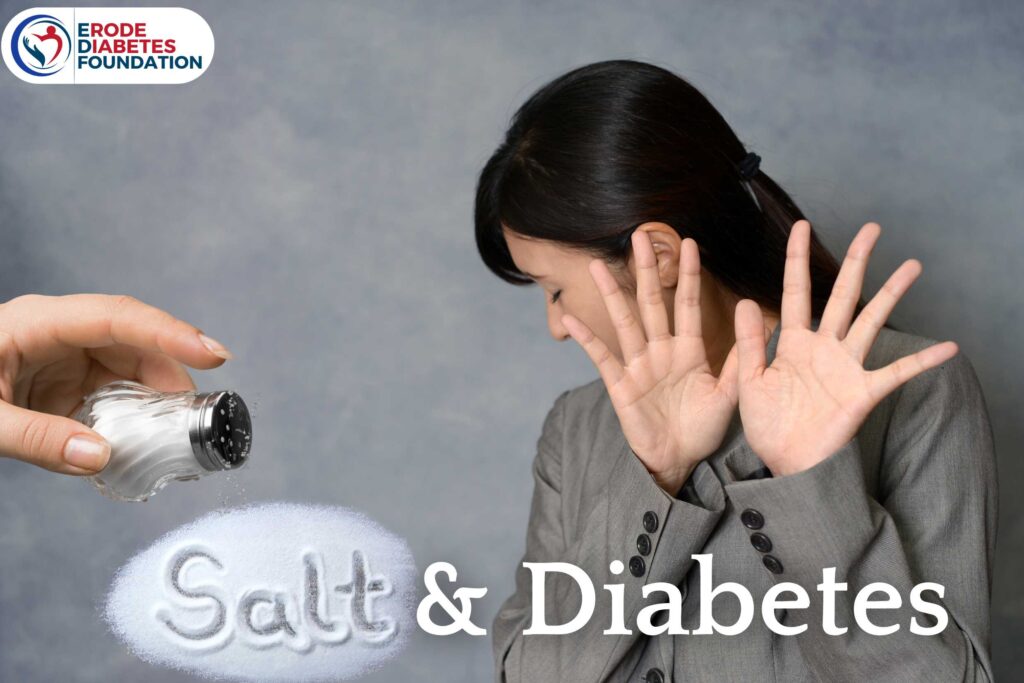Usually, you will start to begin sticking to a diet plan if you have been diagnosed with diabetes. Most importantly, when following the diet, diabetics often fail to consider their salt intake. Read on to learn more about the relationship between salt and diabetes and how to reduce their usage of it in this blog.

For diabetics, why is salt bad?
Carbohydrates are the dietary component that most diabetics have trouble consuming. However, salt also poses a hidden threat. The mineral sodium, which makes up the majority of salt, is vital in maintaining the body’s electrolyte balance.
A body with too much salt causes high blood pressure, which raises the risk of heart disease. Moreover, insulin resistance in the body is affected by sodium. Uncontrolled diabetes, as you are aware, can result in several issues. Similarly, eating too much salt can raise your risk of heart disease if you have diabetes.
Salt sources
There are numerous other ways that salt infiltrates your diet besides the salt you put on your food. Some of them are
- Processed foods
- Salted snacks
- Chinese foods
- Accompaniments
- Bread and cereals
- Canned foods
- Instant foods and restaurant foods
How to reduce your salt intake?
For diabetics, it’s important to be mindful of their salt intake for better health management. Here are a few key things to remember.
Moderation is Key
Diabetics should consume salt in moderation. Thus, limit the use of table salt and be cautious of processed foods, which often contain high levels of hidden sodium.
Balanced Diet
Emphasize a balanced diet rich in whole grains, vegetables, and lean proteins. These foods can help regulate blood sugar levels and reduce the need for excessive salt.
Spices and Herbs
South Indian cuisine is known for its flavourful spices and herbs. Utilize these to enhance taste without relying on excessive salt. Further, turmeric, curry leaves, and cinnamon are good options to be considered.
Avoid Pickles and Papads
These traditional South Indian accompaniments are often high in salt. Therefore, limit their consumption or opt for low-sodium versions.
Read Labels
When buying packaged foods, read nutrition labels carefully. Seek out items with the designation “low sodium” or those that proudly proclaim “no added salt” on their packaging.
Home Cooking
Meal preparation at home gives you more control over the amount of salt. Use less salt during cooking, and consider alternatives like lemon juice, tamarind, or vinegar for flavour.
Stay Hydrated
Drinking enough water is important, as it helps flush excess salt from the body and can aid in diabetes management.
Consult a Dietitian
For personalized advice, consult a registered dietitian who can create a meal plan tailored to your specific needs and preferences.
To summarize
As a result, there is a clear correlation between salt and diabetes, meaning that elevated salt intake is harmful to diabetics. Thus, reduce your intake of salt by shifting the balance in your favour and lowering your chance of developing heart disease.
Further, reducing salt intake can help manage blood pressure and overall health for diabetics, but it should be part of a comprehensive approach to diabetes management, including regular monitoring, medication (if prescribed), and a healthy lifestyle.


